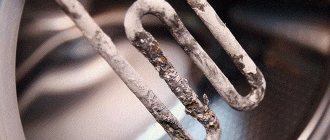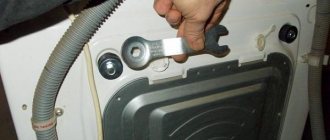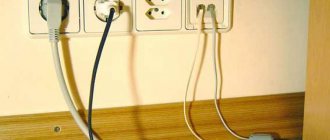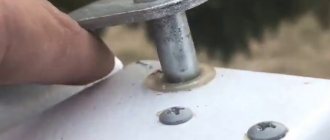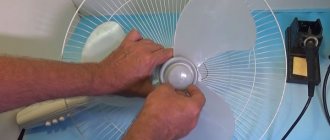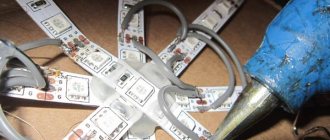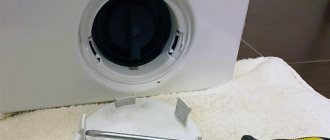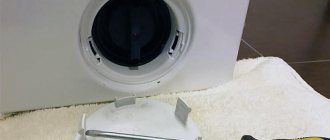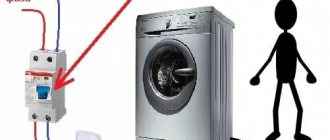Published: 14 Oct 2020
Although advertising promises with all its might that the washing machine operates silently, in reality this is not the case. SMA is a complex household appliance, some of its parts move and rotate, and therefore make noise. This is the sound of normal operation, but sometimes owners notice that something is knocking loudly inside the washing machine. It can rattle in different ways:
- a knocking sound appears during washing or is heard during the spin cycle of the washing machine;
- The knocking sound in the washing machine is heard only in the spin mode.
What to do if you hear unusual knocking sounds? First you need to exclude external causes.
Reasons for knocking when the washing machine is operating
If you hear knocking while washing for the first time, do not rush to panic. First, remember what you loaded into the car? Perhaps it is some parts of the loaded clothes that are knocking . For example, knocking noise may occur when washing jeans. Their metal buttons can knock on the glass of the hatch or on the drum. Therefore, if there are large metal or plastic parts on things, turn them inside out while washing or use special bags.
If a knocking sound in the machine appeared while washing soft items without any decorative elements, then it may be due to a malfunction. There may be several reasons for this behavior of the washer:
- uneven distribution of laundry in the drum;
- incorrect installation of the machine;
- malfunction of drum suspension parts - shock absorbers or springs. It is also possible that the fasteners and dampers of these parts may be damaged;
- or its fastenings are weakened, loose or cracked The counterweight is a heavy balancer made of cast iron or concrete. It gives the machine stability and also reduces vibrations during spinning, especially at high speeds;
- faulty bearings or seals in the drum drive. In this case, in addition to knocking, there may also be a burning smell from the seals. Often, it is the destruction of the seal that causes bearing wear. The bearing is adversely affected by the ingress of oil seal particles, dust and moisture. When a bearing fails, squeaks appear first, and then knocking. Naturally, the car begins to vibrate strongly;
- weakening or destruction of fastening parts of various internal components of the washing machine. The knocking noise may be caused by a fallen hose, pump housing or surge protector. During operation, they simply hit the tank or machine body;
- ingress of foreign small objects between the walls of the tank and drum. It could be a button, coin, bolt that fell out of your pockets;
- shipping bolts that were forgotten to be removed when installing the machine. This sometimes happens, especially when installation work is done in a hurry. In some cases, the plastic bushings for these bolts must also be removed.
Uneven distribution of laundry in the drum
This is a fairly rare problem that usually occurs in older model washing machines. It is as follows: during the washing or spinning process, the laundry gathers in a lump, so a large imbalance occurs , which causes the washing tank to start knocking on the walls of the body. In modern models, this problem is absent, thanks to the use of an imbalance control system and the “ability” of washing machines to distribute laundry evenly during washing.
Identifying a problem by sound
The greatest noise from the SMA comes from spinning, which is explained by the high speed of rotation of the drum. If the noise level is 75 dB, then there is nothing strange about excessive volume. To determine the cause of the malfunction, you need to listen to the sound, which can be:
- increasing, uncharacteristic of the washing process;
- vibrating strongly during spinning;
- resembling blows or grinding sounds.
Such sounds can occur when washing items with metal elements. If such violations are constant, then this is the main sign of minor or serious damage.
If the color of the water changes when draining, rusty spots begin to appear on clothes after washing, the drum begins to jam or there are leaks, and all this is accompanied by a roar, then this indicates wear on the shaft, oil seal and bearing. To repair the part, the intervention of a specialist is necessary. You can independently determine the common causes of the malfunction.
Incorrect installation of the washing machine
If the washing machine starts to knock when spinning at high speeds and vibrates strongly, then the problem most likely lies in its incorrect installation. In such a situation, the knocking does not occur inside the car, but from its vibration. This problem should not be solved with an anti-vibration mat.
Accessories and consumables for washing machines
The correct solution is to install the unit correctly.
The washing machine should be installed on a flat surface and preferably strictly level . To check that the machine is installed correctly, place a level on it and also rock it from side to side. The legs should not come off the floor.
Connecting washing machines to water and sewerage
Acceptable noise levels
Depending on the model of the washing machine, the noise level of its operation also changes. You can find the limit value of this parameter in the operating instructions. The noise that household appliances can make depends on the drive:
- belt - noise does not exceed 75 dB;
- direct – the noise level does not exceed no more than 70 dB.
Important!
There are no washing machines that operate silently. However, the specified noise level range does not cause inconvenience to the user.
Broken shock absorber or spring
The tank and drum in the washing machine are in a movable state. They hang on springs and are supported from below by shock absorbers . This allows the tub to gain some of the movement needed to correct imbalances and also helps compensate for vibrations during the spin cycle. Over time, any part can wear out. Shock absorbers with springs are no exception. During operation, they experience quite heavy loads, so they can fail. The reason may also be that the shock absorber fastening is broken or the bolts of this fastening are loosened.
If a shock absorber or spring breaks, the tank may tilt or even move to the side, which leads to its imbalance and, as a result, to knocking when the machine is operating. In this case, you should stop using the machine and eliminate the cause of the malfunction. To find it, you need to disassemble the unit and replace the failed parts.
Home washing machine maintenance
Line filter failure
It happens that the drum of the washing machine knocks if it is slightly shaken. This indicates that the surge protector has broken off and is hitting the body during washing.
The surge protector is responsible for damping electrical impulses and is fixed on the housing. Often the installation site cannot withstand vibrations and cracks. The surge protector is left in limbo. The problem is typical for all machines, even premium ones.
It is enough to buy new mounts (for example, from a retail online spare parts store) and put the filter in its place.
To install it you will need soldering. If you don’t understand anything about electrics, it’s better to give the work to a specialist; the repairs will be inexpensive.
Counterweight problem
A counterweight is attached to the washing machine tub to weigh it down. This is done so that the laundry, during washing and especially spinning, cannot rock the tank and, of course, the machine itself. During operation, the counterweight may become loose and begin to knock . To fix this, you need to disassemble the car and tighten the bolts that secure it. As a rule, counterweights are mounted on the front wall of the washing tub.
To adjust the counterweight, you must:
- remove the top cover and pull out the dispenser tray;
- unscrew the bolts securing the control panel;
- release the plastic latches using a flat-head screwdriver;
- disconnect the control panel;
- remove the plinth panel to gain access to the front panel fastenings;
- Unscrew all the bolts around the perimeter and remove the front panel;
- check the counterweights and secure their fastenings.
But sometimes it happens that the counterweight breaks, especially if it is made of concrete. If, after disassembling the car, you see that this part is destroyed, then it must be replaced.
Other problems
The washing machine may start making noise because you did not check the pockets before washing. Therefore, various small objects can get into the space between the walls of the drum and the tank and, therefore, knock during operation.
To fix this problem, you need to:
- remove the front and rear panels;
- unscrew the heating element;
- remove all excess from the interior of the machine;
- Reassemble the car in reverse order.
Another cause of knocking can be worn bearings. In this case, the knocking is also accompanied by a creaking sound . If the problem really lies in the bearings, they need to be replaced.
To verify that the bearings are faulty without disassembling the washing machine, you can try the following:
- spin the drum by hand . If its rotation is uneven, the bearing has begun to wear out;
- shake the drum up and down with your hand . If it moves away from the washing tub in such a way that a backlash (gap) is formed, therefore, the bearing will very soon fail.
Replacing bearings is an inexpensive repair, but responsible and time-consuming. If they are not replaced in time, this may cause damage to the tank and crosspiece. However, in the absence of the necessary knowledge and skills, it is better to entrust this work to a specialist.
If the drum knocks loudly when spinning, you should check the fastening of the surge protector . This part is mounted on the rear wall of the machine and is designed to equalize electrical voltage. A poorly secured filter begins to hit the tank while the machine is running, which causes knocking sounds. This can be eliminated by securely attaching the filter.
How to repair it yourself
Before you begin the repair, you need to familiarize yourself with the general recommendations that must be followed when carrying out the work:
- Blackout. First, the equipment is disconnected from the electrical network to protect yourself from electric shock.
- Removing the back cover. To get to the inside of the washing equipment, you will have to unscrew the back panel, which is attached with bolts.
- Replacement of parts. Broken components that cause the knocking sound must be replaced with new ones.
See also
How to care for parquet boards at home and the best remedies
The danger of self-repair
In any case, if unusual sounds appear during operation of the washing machine, you should stop using it and call a technician. It should be noted that knocking in the car can be eliminated without a lot of time and family budget . But independent repairs at home without the appropriate knowledge and skills can turn into a real accident and aggravate the problem so much that there will be a need to purchase a new unit. Therefore, it is better to seek help from a specialist than to cause even more damage to the car.
Tips for avoiding malfunctions
In order for the “helper” to last longer, you must strictly adhere to the operating rules. Among the most important rules are:
- do not wash more clothes than is provided for in the machine’s passport;
- clean the drum for preventive purposes;
- programs that provide high water heating should be used to a minimum;
- after each wash, the hatch must be open;
- if necessary, wash several times a day, take a break between cycles;
- use of water softeners.
It is also important to turn items inside out before washing. These precautions will help your washing machine last longer.
